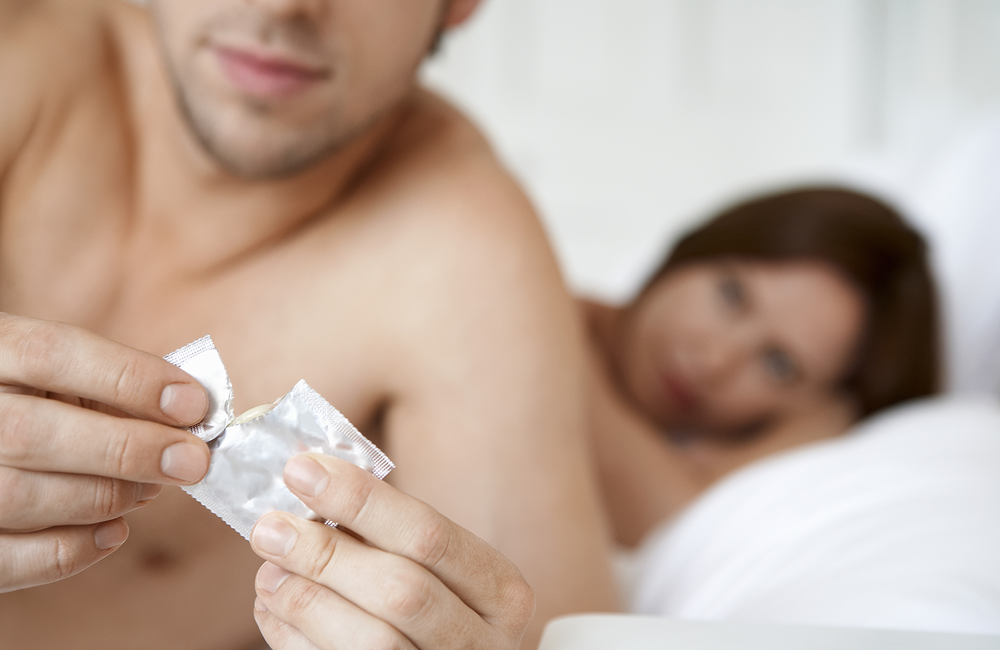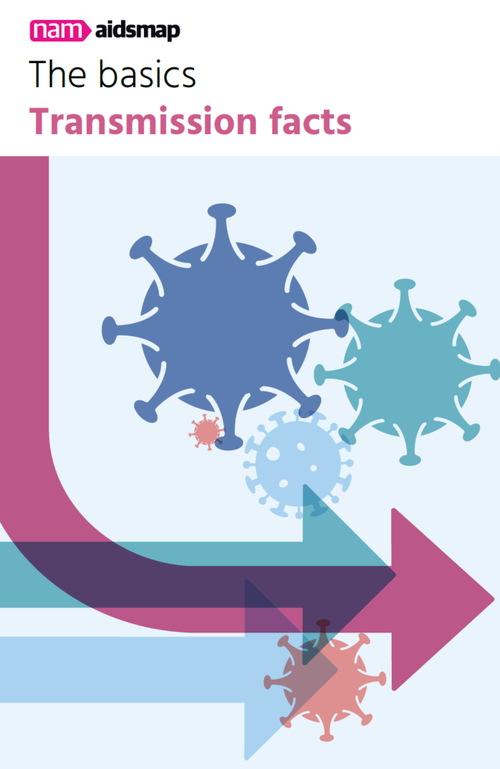
Key points
- Condoms protect against HIV, other sexually transmitted infections and pregnancy.
- Both female and male condoms are available.
- It’s important to follow the advice on how to use condoms correctly.
Condoms are used during sex to provide a barrier. When used properly and consistently, they can prevent HIV and many other sexually transmitted infections. Used correctly, they are also an effective form of contraception (preventing a pregnancy). Both male and female condoms are available.
If you’re having difficulties with condoms, such as breakages, or irritation in the genital area, or perhaps you’re finding it difficult to negotiate using condoms with your partner, you can speak to a trained health adviser in your HIV or sexual health clinic.
How to use a male condom
Male condoms come in a range of shapes, sizes, thicknesses, flavours, textures and colours. They are also known as external condoms. Though the standard size will fit most people, smaller and larger condoms are available. Use a brand that fits well. Some condoms are only designed to enhance sexual pleasure and do not act as an effective, protective barrier. Check the information on the package. Normal-strength condoms can be safely used for anal sex.
Condoms come rolled up in a plastic or foil wrapper. When opening the wrapper be careful not to tear the condom.
- Put the condom on once the penis is hard, but before sexual contact begins. Unroll the condom all the way down the shaft of the penis.
- Condoms come with a teat or a plain end. In either case, it is important to allow enough room for the semen to be able to fill the end of the condom. Make sure there is no air in the condom, by holding the teat or end between your thumb and forefinger as you roll the condom on. If you leave air in the end of the condom, it may break when you ejaculate into it.
- If the penis goes soft, the condom may slip. This is the biggest single cause of condom failure. Holding the base of the condom will help it stay in place. If the condom slips or breaks, withdraw immediately and use a new one.
- After ejaculating, withdraw the penis promptly, before it goes soft. Hold on to the base of the condom as you withdraw.
- Never re-use condoms.
- If you are having penetrative sex for a long time, the risk of the condom breaking increases. It is safest to change the condom every 30 minutes.
When these guidelines are not followed, condoms are more likely to break or come off.
For more detailed information and a step-by-step guide, read our factsheet How to use condoms and lubricant.
What lubricants can be used with condoms?
Lubricants can be used to assist penetration in vaginal and anal sex. The vagina usually lubricates itself when a woman is sexually aroused; you may not need additional lubricant for vaginal sex unless the vagina feels dry.
You should always use lubricant for anal sex. Most condoms come pre-lubricated, but this is not adequate for anal sex and may not be for vaginal sex.
Apply lubricant to the outside of the condom (once it is on the penis) and to the entrance to the rectum or vagina. Don’t put lubricant inside the condom as this can cause it to slip off during sex.
Latex condoms should be used with a water-based, or preferably silicone-based lubricant. Never use oil-based lubricants such as body lotions, massage oils, or Vaseline, as these weaken the latex and can cause the condom to break.
Water-based lubricant dries out quicker than other lubes: it can become a bit tacky and sticky. This is especially likely during anal sex (a silicone-based lubricant may be more suitable). On the other hand, water-based lubricant is safe to use with all sex toys (all materials are compatible with water-based lube) and is easy to clean up since it won't stain most fabrics.
Silicone-based lubricant is longer-lasting and you are unlikely to need to reapply any. It holds up well under water (making it better for sex in the shower than water-based lubes). But it can be difficult to clean up: you'll need soap and water to wash it off your body, and it can stain sheets and clothing. You should avoid using silicone lube with silicone sex toys; it will gradually cause the sex toy to deteriorate.
Hybrid lubricant is a blend of silicone and water-based lube.
Why do condoms break?
Male condoms are more likely to break if:
- the condom is unrolled before being put on the penis
- intercourse lasts for more than 45 minutes without the condom being changed
- no lubricant is used
- an inappropriate lubricant (oil-based or saliva) is used
- the condom is the wrong size
- two condoms are used at the same time
- no space is left at the tip of the condom
- the condom is exposed to a sharp object when the packet is opened.
How to use a female condom
The female condom (sometimes referred to as internal condoms or by the brand name Femidom) is a thin plastic pouch (made of polyurethane) with a flexible ring at each end. Instead of being put on to the penis, it is put inside the vagina. It comes pre-lubricated, but you may want to use additional lubricant; you can use any sort as the female condom is not made of latex.
You can put a female condom in several hours before sex if you want to.
- Find a comfortable position. You can stand with one foot on a chair, sit on the edge of a chair or bath, lie down, or squat.
- Squeeze together the sides of the inner ring at the closed end of the female condom and insert it into the vagina like a tampon.
- Putting a finger inside the female condom, push the inner ring into the vagina as far as you can.
- Pull out your finger and let the outer ring stay outside the vagina.
- When you are ready to have sex, use your hand to guide your partner’s penis in, making sure his penis doesn’t slip between the condom and the side of the vagina.
- The female condom is loose-fitting and will move during sex. That’s fine as long as the penis stays inside it.
- You don’t have to take it out immediately after sex. When you do remove it, squeeze and twist the outer ring to keep semen inside the pouch. Gently pull it out of the vagina.
Are spermicide condoms better?
Some condoms are coated with a spermicide to assist contraception. However, the spermicide nonoxynol-9 can cause irritation, genital sores or lesions in the rectum or vagina and increase the chance of passing on an infection, including HIV. Try to avoid condoms with a spermicide, and don’t use additional spermicide as a lubricant.
How effective are condoms?
In laboratory tests, under conditions of perfect use, male condoms are up to 99.5% effective.
However, people who plan to use condoms may not in fact do so every time they have sex. Also, people sometimes use condoms in the wrong way – for example, using a condom that is not the right size for the penis. This increases the risk of condoms slipping off or breaking.
For these reasons, the ‘real world’ effectiveness of condoms is somewhat lower. Studies show that heterosexual couples who say they have used condoms every time they have sex have between 70 and 80% fewer cases of HIV infection than couples who say they have not used condoms at all. Similarly, estimates for effectiveness when used by gay couples range from 70 to 92%.
"HIV, sexual health and contraception clinics provide free condoms."
This is a difficult topic to research and these are rough estimates: the true figures could be somewhat higher or lower. Also, these are averages across a wide range of people. For an individual who can use a condom every single time he or she has sex and who uses them in the right way, condoms will be more effective than this. But it may be unrealistic to expect a single prevention method to provide 100% protection or to work every single time.
Research shows that female condoms have a similar level of effectiveness as male condoms when used by heterosexual couples.
Where can you buy condoms?
Male condoms are commonly sold in shops, but female condoms aren’t as widely available. If you buy condoms on the internet, make sure you buy them from a reliable retailer, such as this NHS website: www.freedoms-shop.com. HIV, sexual health and contraception clinics provide free condoms.
It's important to choose good quality condoms. Check for a quality mark such as the BSI Kitemark or the European CE mark, and check the expiry date. Don’t use condoms that have been exposed to light or direct heat for any length of time.

